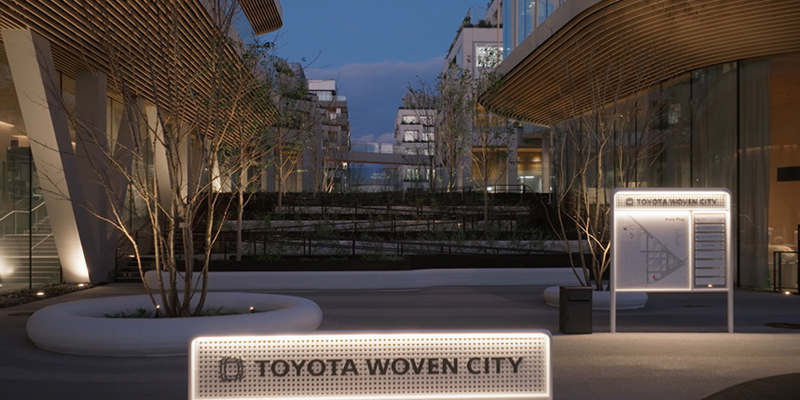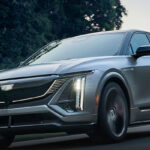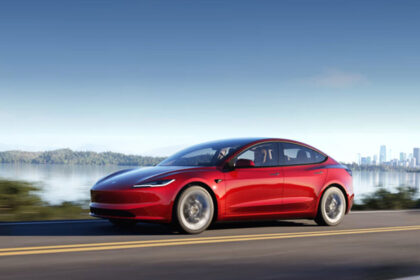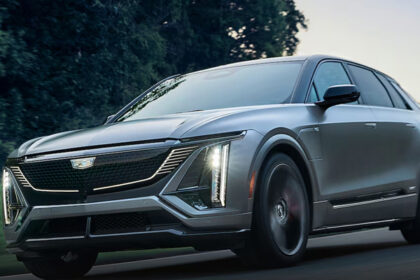With a price tag exceeding $10 billion, Toyota’s Woven City is set to welcome its first residents this fall, officially establishing itself as a hub for the future of mobility.
Toyota, the world’s leading automaker by sales volume, has already secured its place in history, but the company aims to achieve more than just automotive success. The Woven City represents a pivotal shift in Toyota’s evolution from a traditional car manufacturer to a comprehensive mobility company. Designed as a living laboratory, Woven City enables designers and engineers to test their latest innovations in real-time with actual residents.
Toyota’s Woven City: A “Living Laboratory” for Future Mobility
Toyota’s Woven City is designed to serve as a “living laboratory” aimed at shaping the future of mobility for people, goods, information, and energy. This innovative city will enable engineers and designers to develop and test their projects in real-time, ensuring they align with customer needs.
The city will consist of two main groups: Inventors and Weavers. The Inventors group includes Toyota, startups, research institutions, and partner companies that will gather real-world data for their innovations. Meanwhile, Weavers—comprising residents and visitors—will actively engage with and implement the new technologies.
Currently, the list of partners includes coffee producers, instant noodle manufacturers, air conditioning firms, educational organizations, and soft drink companies. These partners are innovating in areas such as creating pollen-free environments, developing vending machine concepts, exploring food cultures, designing futuristic café experiences, and utilizing data to enhance educational methods and learning spaces.

Toyota
Toyota’s Woven City is defined by three key principles:
- Purpose: To advance the future of mobility and improve well-being for everyone.
- Vision: To create a world where the evolution of mobility transforms possibilities.
- Mission: To lead the way toward the next generation of movement through a testing ground that fosters innovation.
By providing inventors with a real-world testing environment, Toyota’s Woven City will accelerate the development of the automaker’s technologies. Instead of being confined to a traditional lab setting, inventors will have the opportunity to integrate their products and services into the everyday lives of residents.
One particularly intriguing resource available to inventors is the Woven Inventor Garage, a collaborative space that offers access to cutting-edge technology to support them throughout their development journey.
The Digital Twin serves as a virtual simulation of Woven City, allowing inventors to test scenarios and products on a digital platform before moving to real-world testing. Some initiatives within Woven City include automated driving services, smart logistics, and remote communications. To date, the Woven City project has incurred an astonishing cost of $10.13 billion.
The initial residents are expected to arrive in the fall of 2025
The first residents are set to arrive in the fall of 2025. Toyota introduced the Woven City concept five years ago, with the groundbreaking ceremony held on February 23, 2021. This innovative city is located on the former site of Toyota Motor East Japan’s Higashi-Fuji Plant in Susono City, Shizuoka Prefecture, Japan.
Recently, at CES 2025, Toyota Chairman Akio Toyoda announced the completion of phase one. The company is now prepared to welcome residents, with the first group scheduled to move in during fall 2025.
The initial group of 100 residents will consist of Toyota employees and their families, with phase one accommodating a total of 360 residents. Partner families are expected to move in later, and by 2026, Toyota plans to expand the population to 2,000 inventors and weavers while also opening the city to the public.
Toyota’s Woven City represents a significant step in its evolution from an automaker to a mobility company.
At its inception, “Woven by Toyota” operated as an independent company, but plans for a change were implemented last year. As of September 27, 2024, Toyota held a 95% stake in Woven and intended to acquire the remaining 5% by the end of October. With this consolidation, “Woven by Toyota” officially became a subsidiary of Toyota Motor Corporation.
As reported by Toyota Times, the remaining 5% stake was owned by Akio Toyoda, Chairman of Toyota. Chairman Toyoda initially acquired his stake for five billion yen, but concerns about potential conflicts of interest due to his roles as both representative director and shareholder led him to sell. Toyota proposed purchasing his shares in “Woven by Toyota” for 5.1 billion yen, equivalent to $32.8 million.
Toyota’s acquisition of Woven aligns with the launch of its Arene vehicle operating system and platform, which is set to begin in 2025. This transition will see Woven by Toyota shift from independent product development to focusing on projects specifically for Toyota. Toyota executives have already taken prominent positions at Woven, with Hajime Kumabe serving as CEO.
Notably, Toyota’s transformation into a mobility company extends beyond ground transportation. Woven by Toyota has also announced an investment in Interstellar Technologies Inc., a company specializing in space infrastructure and rockets. According to the press release, Interstellar Technologies Inc. “will leverage Toyota’s expertise to facilitate the mass production of rockets,” adding an exciting dimension to Toyota’s mobility vision.
Phase Two of construction is currently in progress.
With phase one completed, Toyota is moving quickly and has already started site preparations for phase two. Insights gained from phase one will inform enhancements to Woven City’s functionality in phase two and future phases, ensuring that the city’s capabilities are continually improved.
Toyota has not provided much information regarding expectations for phase two. However, since the refinement of plans relies on insights from phase one, it may take some time before we receive further updates about the future of Woven City.
Final thoughts
Woven City may sound like something from a science-fiction novel, but witnessing its development is truly exciting. While some critics label Woven City as an extravagant concept, its practical applications are robust and could lead to significant advancements in mobility.
Would you consider living in a city created by an automaker to assist in developing their future products? Or does that idea feel too much like “1984” for your liking?









